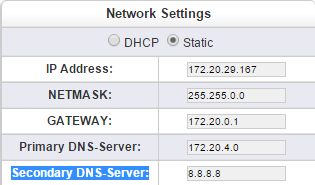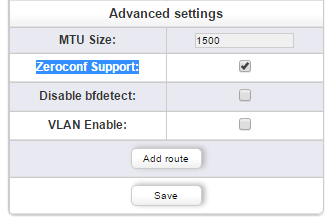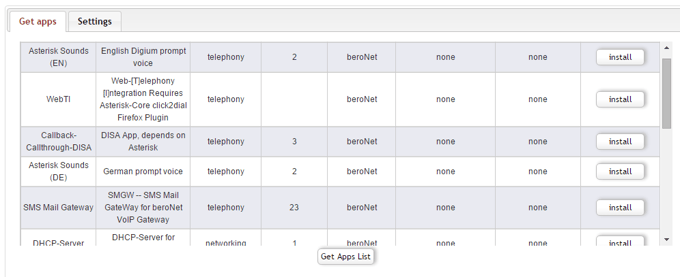After months of development, the beroNet firmware 3.0 is now available. With the new firmware comes a number of new features such as T1 compatibility, representing beroNet's first step into the North and South American markets, and SIP to SIP functionality, enabling beroNet to offer VoIP gateways with SBC and SBA features.
Here is an overview of the new features brought by beroNet Firmware 3.0:
1) Cleaner web-interface
One of the most noticeable changes we made in the new firmware is the appearance of our web interface. We dropped the red beroNet style and created a new design unifying the templates of our website, Cloud and VoIP gateway interface. This new design also solves numerous questions regarding the "missing red border of the Webgui": http://wiki.beronet.com/index.php/FAQ#The_Webgui_has_no_red_Border_at_the_right_site.2C_is_that_a_bug_.3F
I hope you will enjoy as much as we do.
2) Dialplan:
A few changes have been made in the dialplan for convenience and technical reasons:
- Mass Functions
It is now possible to activate, deactivate or delete multiple rules at once by selecting more than one rule via the selection boxes on the left column.
- SIP to SIP Rules
You can now connect two SIP peers with each other. This feature is only limited by the number of licenses you purchase, the number of SIP to SIP channels one gateway is able to support and your imagination. Here is an overview of our licensing model:
| License | beroNet hardware necessary for codecs transcoding | Price (€) |
| 2 channels | BF400box / Small Business Line | 0 |
| 4 channels | BF400box / Small Business Line | 90 |
| 8 channels | BF400box / Small Business Line | 170 |
| 16 channels | BF1600box | 300 |
| 32 channels | BF1600box | 450 |
| 64 channels | BF6400box | 600 |
-
Match-Type:
It is now possible to choose how a dialplan rule will be matched depending on the "match type" of a SIP peer. It can be matched by 6 different fields: IP address, From user, To user, Detault SIP account, Any or Manual address. Two of them are new: "To User" and "Default SIP account".
- Transport Protocol per SIP Peer
The transport protocol can now be chosen per SIP peer. UDP, TCP and TLS are the available protocols.
- NAT-Options (incl. STUN)
The NAT options can be configured in each SIP peer individually. Three options are available as shown here below:

- ENUM - Option available
The ENUM option is available on beroNet VoIP gateways upon request. If you are interested in this feature, please contact sales@beronet.com
- CLEARMODE - Codec (RFC4040)
The clearmode codec is now available in the additionnal configuration option of each SIP pear. The clearmore codec enables VoIP integrators to keep to advantages of ISDN on SIP connections. The codec keeps all the information sent by the ISDN connection and translates them in SIP.
ISDN:
The biggest improvement brought by the firmware 3.0 specific to ISDN is the compatibility with PRI T1 and R2, mostly use in North and South America. Partner who purchase the T1 compatible modules will have the possibility to choose if they want to use either E1 or T1.
- T1 PRI which is the digital T1, which can be compared to the E1 used in Europe
- T1 CAS (Channel Associated Signalling) which is a bundle of 24 analog lines and each one of them has its own signaling. It used to be the standard system in the US but it has been less and less used. We still found it necessary to have a compatible hardware for it, just in case.
- E1 MFC/R2 which is a standard often used in South America. Technology wise, it resembles the T1 CAS of the US.
- MWI: beroNet VoIP gateways now support MWI (Message Waiting Indication). This technology is used on traditional systems, mostly analog telephones. It illuminates an LED on the end point to notify a telephone user of waiting voicemail messages. It now also works when the message is delivered via SIP thru a beroNet VoIP gateway.
- HOLD, Retrieve, Transfer
The beroNet VoIP gateways can now support call transfers from analog end-points. By using the "R" key (also known as Flash-hook), calls can be transferred from one analog end-point to the other.
Hardware:
- Second - DNS:
A secondary DNS server can now be configured as a back-up of the primary one:
- Advanced ACLs:
The ACL can now be detailed in a very precise way in order to improve the securtiy of beroNet VoIP gateways. The interface offers default rules and the possibility to add new ones:
Provisioning / Zerotouch:
Furthermore, the "Zeroconf Support" has also been added enabling Linux and Apple users to detect and access their beroNet VoIP gateways via the "Bonjour" protocol. For this to function, the following option needs to be activated:
Apps:
FW Update:
We have also changed the way updates are done on our VoIP gateways. A reboot in "update-mode" is now necessary.










